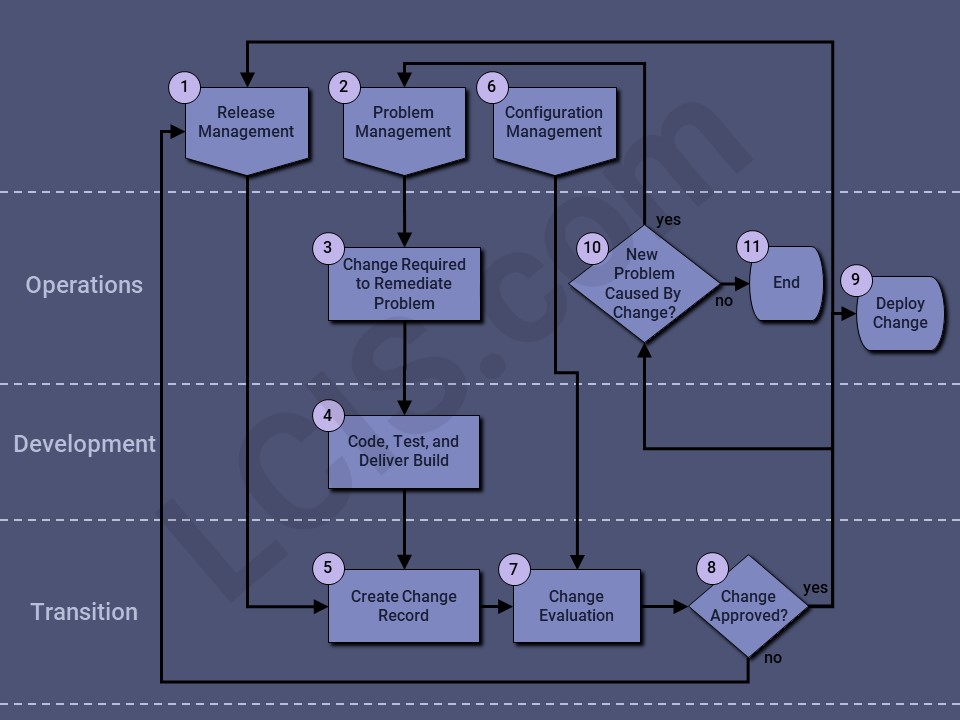Change Management
Change Management is required when a service defect or enhancement requires a code change to remediate. Change Management is a Service Transition process, so this flow separates the Development and Operations activities, as well as the tasks transitioning the service from Development to Operations.

- Release Management requires a change record be created as part of Release planning.
- Problem Management can also initiate the Change Management process.
- This happens when releasing a change is required to remediate a Problem.
- The Development team leverages a defect tracking tool to analyze, code, test, and deliver a build to remediate the Problem. This team may leverage the Agile methodology, adding the defect remediation to an upcoming sprint.
- The Transition team creates a Change Record with all items included in the Release (1).
- Configuration Management informs the Change Management process by identifying related services that may be impacted by the Change.
- A Change Evaluation is performed to confirm the Change has met the organizational standards, including a back-out plan.
- A Change Approval Process is initiated, considering the risk and urgency of the change.
- If the Change is approved, it is deployed, otherwise, it is rejected and routed to Release Management (1) for review.
- After implementation, the Operations team confirms there are no unintended consequences of the Change. If a new Problem is identified as caused by the change, the Problem Management process is initiated (2).
- Successful Service Transition is achieved when Changes are released without unintended consequences.